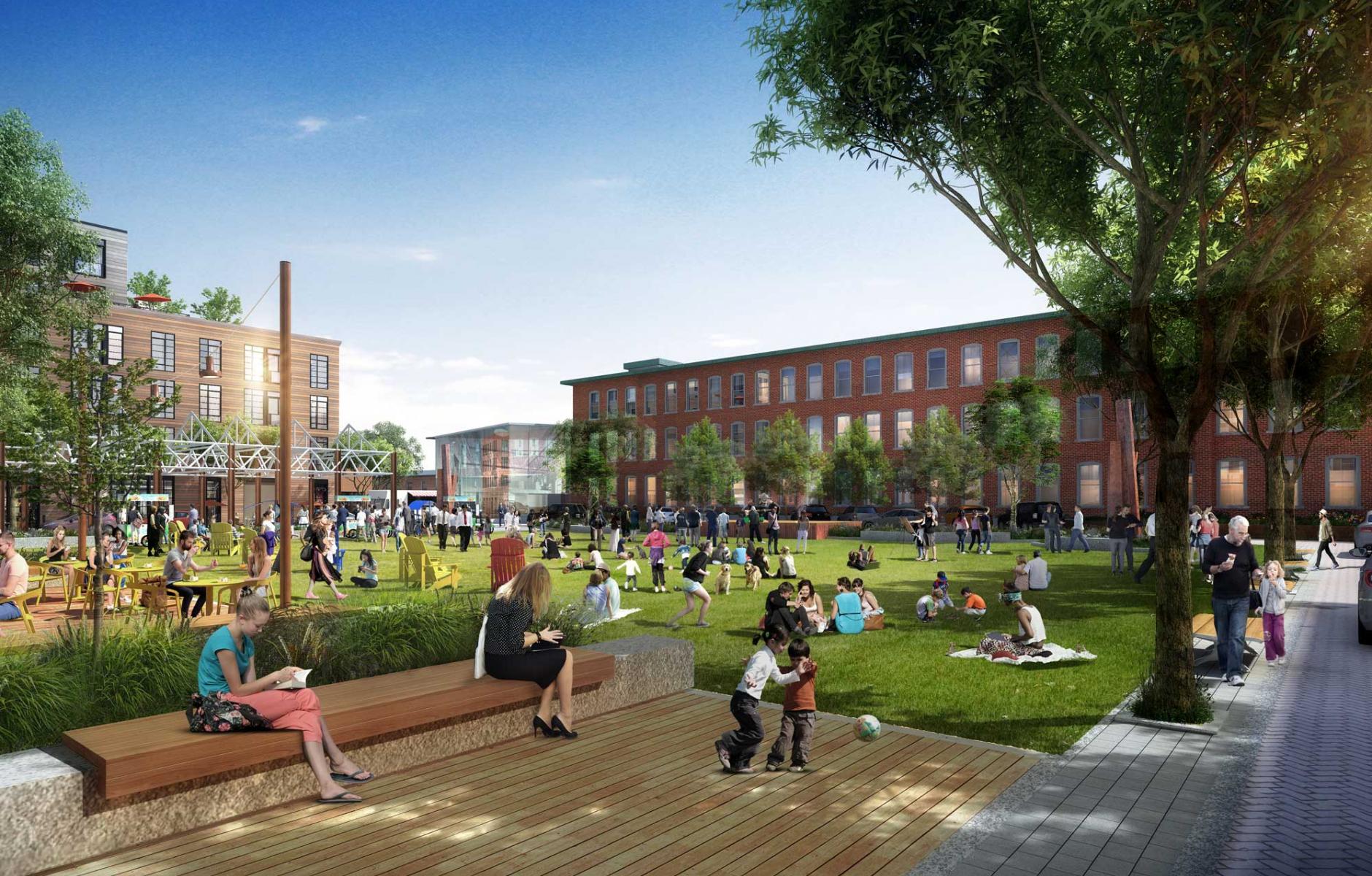
Planning for life in cities after the pandemic
We’ve been here before.
In the midst of the Coronavirus pandemic, heavy clouds hang over words like “density” and “urban.” These same clouds took shape in the aftermath of 9/11, when influential articles like a Blueprint for a Better City (Wired, December 1, 2001) proclaimed “Density Kills,” and called for a return to safer suburbs. Just recently, the governor of one of America’s largest states publicly questioned whether his state needed to explore lower density models for growth in the aftermath of COVID-19.
Yet density and the lively interaction it brings to urban life has been foundational to the plans so many of us continue to work on—and in many cases are about to publish. We learned important lessons from 9/11—one of which was to enrich our approach to creating increased densities and great urbanism, but not lose sight or our long-term goals of creating more livable, equitable, and resilient communities.
As we continue to plan today in an era of social distancing, we need answers to three critical questions:
- Will all the work we have put into the plans we are working on—and the considerable community engagement that they were grounded in—still matter?
- Will the pandemic have taught us critical lessons that will continue to be relevant in the post-pandemic world?
- Can we integrate these lessons into the planning work we have been doing and should we continue to move forward?
The answer to all three questions is a resounding YES!!!
Our message to our communities—and perhaps the first page of every post-pandemic planning report—should explain: COVID-19 has revealed critical lessons that can enrich our urban planning.
- We need to create more opportunities to enjoy nature. The most often noted positive change in our cities due to the pandemic—whether sampling Twitter or talking to friends and colleagues in Boston and other cities across North America – is that fewer cars on the road means the air has become significantly clearer. And a close second – as we spend less time in our cars, many of us report rediscovering how much taking a walk in nature renews our spirits and nurtures our soul.
- We need to create healthier communities by paying more attention to what science and data tell us about the outcomes of our plans. The reality is that the health, social, environmental, and economic benefits of density far outweigh the risks, and we need to make this case to our communities and be far better prepared for those risks.
- We have to redouble our efforts to address inequity. The pandemic’s toll, measured in health and economic impacts, has been far greater for people of color and those living in poverty.
Even in the midst of an unfolding tragedy, we cannot afford to lose sight of “the new norm”—the fundamental realities that will continue to forge a more urban future for our communities over the next decades. These fundamental realities began well before the pandemic and will continue well after this crisis has passed.
Dramatic demographic shifts, projected to accelerate for the foreseeable future, are creating unprecedented demand for housing in walkable downtowns and urban neighborhoods. Harvard’s Joint Center for Housing Studies projects that singles and couples will increasingly dominate household growth—and steadily increase demand for urban living. Drilling down into this data suggests even stronger market potential for walkable downtowns and urban neighborhoods. Most notably? Better educated (and higher income) households that represent the talent that powers our knowledge economy increasingly more likely to move to regions with lively downtowns and urban neighborhoods than their peers.
An aging workforce and booming knowledge economy are combining to create unprecedented competition across North America for increasingly scarce talent—and raising the importance of walkable downtowns and urban neighborhoods.As “industries of the mind” take center stage in fueling economic growth, a global competition for talent is taking hold. Organizations like the Brookings Institution and the International Downtown Association (with support from Stantec’s Urban Places) report that regions with lively, walkable core downtowns and urban neighborhoods are the winners. Even knowledge workers who “tele-work” prefer to live in walkable urban places. Dublin, Ohio, just outside of Columbus, is creating a new higher density, walkable downtown to attract knowledge industry employers—while also attracting talent that wants to work from home. Perhaps more importantly, MIT’s Sloan School of Management reports that attracting and retaining educated workers is critical to a region’s ability to grow jobs across the board.
Emerging new mobility paradigms will strongly favor downtowns and closer-in urban neighborhoods. Today urban dwellers already spend roughly half as much of their disposable income on mobility compared to their suburban peers. The shared and emerging micro-mobility technologies (think Lyft and e-scooters) that flourish in urban cores are reinforcing this advantage. Stantec’s smart mobility planners tell us that future mobility will take the form of shared autonomous vehicles (SAVs) in downtowns and urban neighborhoods with the densities to support on-demand service, increasing convenience while reducing cost.

With a goal of creating “a park that is a street and a street that is a park” Distrito Santa Fe’s vibrant public realm offers plenty of multi-use green space—a rarity in the dense urban environs of Mexico City.
As we continue to plan for more livable communities in the future, early lessons from the COVID-19 pandemic can enrich and expand the core principles that should guide us:
- Continue to promote walkable density to promote healthier, more economically competitive, and more resilient communities. The data tells us that dense, walkable downtowns and urban neighborhoods lead to better public health outcomes, make communities more competitive, and provide increased opportunities to reduce carbon emissions and increase resiliency.
- Expand our efforts to build equity into every plan we bring forward. Equity has many dimensions, but let’s start with three: build significantly more affordable housing (for people at all income levels) in the denser urban cores where demand continues to push housing costs up; expand workforce readiness and training for the knowledge economy; and introduce new programs to support disadvantaged entrepreneurs and businesses in participating in an era of urban opportunity.
- Make sure our communities grow greener as they grow denser. Not all density is created equal—development and trees should never compete, they support each other. Treelined streets and lively parks enhance the value of development, which in turn pays for more trees and parks.
Crises bring us together as a community, supported by the political will to bring forth bold plans that lead to transformative change. Much of the urban renaissance we have enjoyed over the past two decades stems from the funding put forth to prevent an economic collapse following 9/11, and again following the Great Recession of 2008. As we shift our attention from crisis management to recovery, let’s nurture our newfound collective political will, and tap newfound state and federal resources to build an era of more robust, more just, healthier urban places going forward!
Note: We are taking CNU 28.Twin Cities online to host a virtual Congress to be held from June 10-13, 2020 that will include 55-70 sessions and a number of pre-Congress webinars. Registration is open for CNU 28.





